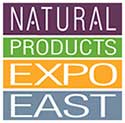What is the ingredient opportunity in the clean label space?
Can we ideate and market our way out of dirty label land?
September 1, 2015

No additives. No preservatives. Natural. Organic. GMO-free. Free-from. Sustainable.
Egged on by empowering social media, consumers from Food Babe to ... maybe you? ... are compelling food manufacturers to clean up their acts. No longer is the food game all about salt, sugar, fat, crunch, yumyum. Educated and empowered consumers are demanding health and nutrition be a prominent part of new food product development efforts.
In a consumer survey commissioned by market readers Innova, fully 91 percent of U.S. consumers agree that food and beverage options having recognizable ingredients can make these products seem healthier.
And for you international marketers out there, while continents around the world flirt with between 10 and 16 percent of new products launched with a claim of "no additives/preservatives," Australia is rampaging to the top clean spot with fully 37 percent of products launched having this claim, Innova says.
In the good ol' U.S. of A., GMO-free labeling is growing at outsized percentages. In 2010, notes Innova, 2,353 products were launched with a GMO-free positioning. In only the last four years, that number has spiked by 40 percent. In response, the Republican-controlled U.S. Congress has put forward a bill that would outlaw all statewide efforts to label GMOs in foods.
The Empire is continuing to strike back against such clean-label transparency efforts. Republicans in the U.S. House pushed through a measure that would roll back Country of Origin Labeling (COOL) for ground beef, ground pork and chicken products.

Expo East panel:
Ingredient Reform Series: Supply Opportunities in the Clean Label Market
Thursday, September 17
10:30 to 11:45 a.m.
Room 302
Baltimore Convention Center
Lastly, the Trans Pacific Partnership - offspring of the World Trade Organization efforts to roll back local regulations that are typically backed by consumers and disliked by corporate interests because it might make them less of a profit - is also well on its way to coming to fruition.
So that leaves consumers to shift - and maybe even disrupt - such ogreous efforts through the power of social media campaigns.
How do marketers envision "clean label" in sales and marketing?
What specific examples can suppliers cite as success stories, and how receptive are manufacturers really to such efforts?
How are manufacturers communicating clean label efforts downstream to consumers?
Is it all about swapping out dirty label ingredients, such as magnesium stearate or silicon dioxide, with clean label alternatives, such as rice hulls?
Or is it also about making processed foods more nutrient-dense through fortification and uber-fortification, which we can call functional foods?
What ethical and environmental ethos are also at play in the clean label world? Sustainability? Eco-friendly packaging? Treatment of animals? Workers?
Is it local?
How big a trend is clean label - is it here to stay?
All these questions and more will be explored by an expert panel at Natural Products Expo East in Baltimore on Thursday, Sep 17, from 10:30-11:45am.
Want to contribute to the conversation but can't make the session? Ask your question in the comment box below.
About the Author
You May Also Like





